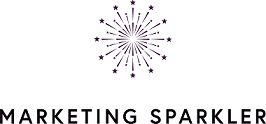Social media has become a critical tool for achieving success online. With Facebook alone being used by billions of people around the world, it would be hard to find a better platform for businesses to engage their audiences and find prospective customers.
That’s why companies of all sizes are actively looking to hire one of the top social media agencies to help them get in on the action as well. That’s especially true for ecommerce sites that can use Facebook to direct thousands of hyper-targeted leads to their best offers.
But while social media offers tremendous opportunities to sell online for e-commerce businesses, what strategies are the most effective?
After all, paid advertising can drain your marketing budget quickly. So, you need to make sure that you’re doing everything you can to maximize your chances of success.
How to Use Facebook to Generate Ecommerce Leads
To help you get started, here are a few of the most important things you should consider, if you want to turn Facebook into your best method to generate ecommerce leads for your store.
Set the Right Goals
Many companies are using Facebook as a free lead generation source. They try to gain followers and increase engagement on their page, regularly posting content and offers in the hopes of attracting leads to their site.
However, relying on free organic reach is an uphill battle. Facebook itself isn’t interested in free business posts dominating the feeds of users. Therefore, they are naturally inclined to give a nudge to businesses who use paid methods for promoting their company on social media.
Luckily, you don’t need to break the bank to get started with paid advertising on Facebook. In fact, the entire interface is very intuitive and catered to make the process as simple as possible to business owners who aren’t naturally tech-savvy.
What’s more, using paid ads allows you to gain access to Facebook’s state-of-the-art analytics and audience database. This database enables e-commerce stores to target hyper-specific audiences, and provide the most relevant messages possible.
With Facebook Ads, you can run a wide range of campaigns with different goals, such as
- driving leads to your site
- increasing engagement
- growing your social media following,
- and more.
The most important thing to remember is that Facebook Ads will require patience. First, you will need to familiarize yourself with the terms and conditions, as well as understand what kinds of ads tend to be accepted and perform best.
[Tweet “Split-test your Facebook ads and tweak them until you start getting consistent results.”]
Then, you’ll have to split-test your ads and tweak them until you start getting consistent results. There are numerous variables that need to be considered to maximize your ROI.
Luckily, you can start small, with just a few dollars per day, and work your way up once you start seeing results.
Facebook provides incredible opportunities for setting up your entire funnel. You can target your audience based on countless factors such as:
- age
- demographics
- location
- interests
- past behavior
- education, and
- employment.
That allows you to set up an effective lead magnet that’s highly specific and relevant to the prospect, maximizing your chances of success.
Install the Facebook Pixel
As we mentioned earlier, running Facebook ads offers many benefits. However, there are steps that you need to take before you can start putting together your ad campaigns.
And one of the most important steps of the process is adding a Facebook Pixel. This will help track visitor behavior on your site and figure out how your campaigns are performing.
The Pixel also helps Facebook collect data about your user behavior and optimize campaigns to maximize conversions, while also developing lookalike audiences that help you expand your reach in the marketplace.
That’s why it’s essential to install the Facebook Pixel before you even run your first campaign. The benefits that it brings are just too important to ignore.
[Tweet “Why is it essential to install the Facebook Pixel before you even run your first Facebook campaign?”]
The Pixel allows Facebook to analyze all of your website’s visitors, as well as the people that you convert, even those that don’t come from Facebook. This information is then used to help make your campaigns more cost-effective and increase sales, which is a win-win situation.
Develop a Sales Funnel and Grow Your Email List
Even if you manage to create a Facebook Ads campaign that generates phenomenal results, that’s still just part of the equation that you need to consider if you want to achieve success.
You see, no matter how good your ad campaign or your offer, not all of your site’s visitors will be ready to buy immediately after clicking through to your store.
When you create a campaign to generate ecommerce leads, you should consider the customer buying cycle. Therefore, you need to have a sales funnel to capture those prospects who aren’t ready to buy yet. If this is not set up, you’re pushing away a lot of potential customers who just need a little bit more time and guidance.
[Tweet “When you create a campaign to generate ecommerce leads, you need to consider the customer buying cycle.”]
Luckily, if you develop a sales funnel that helps to direct and capture your leads into an email list, you can ensure that every dollar that you spend on attracting new leads to your site is used to the fullest.
Some of your best potential customers may be those that didn’t buy initially. If you can establish a connection with them and send relevant messages, you can build trust and establish credibility so that when they’re ready to buy, they won’t even consider your competitors.
By building an email list out of targeted prospects from Facebook Ads, you can provide hyper-targeted and engaging content, because you know exactly who those people are thanks to Facebook’s targeting options.
You can send educational materials that help your prospects solve their problems and move closer to the decision to purchase. Or, you can remind them that they were about to buy something but didn’t and showcase your best current deals in the process.
[Tweet “Build an email list out of targeted prospects from Facebook Ads, to provide hyper-targeted and engaging content.”]
Contrary to Facebook Ads, where you’re paying for every single person that clicks through, email marketing is almost free once you capture the lead. In some cases, you can keep successfully sending offers to each lead for years to come.
Use Retargeting to Maximize Your ROI
While it’s always a good idea to try and reach new audiences on Facebook, if you’re ignoring all the leads that showed interest but didn’t commit, you’re not making the most of the possibilities that Facebook offers.
We already talked about how the Facebook Pixel can collect data about user behavior on your site and then use it to develop better ad campaigns. Well, one of those options involves retargeting the same users that have already performed a specific action, which indicates that they might be interested in what you have to offer.
Almost any data that the Pixel collects can be used to retarget the ad. However, there are a couple of ways that have consistently been successful, especially for ecommerce stores.
The most popular way to use retargeting ads is to target people who have visited your site and added something to their cart, but didn’t make a purchase. Abandoned carts are yet another consideration when using Facebook to generate ecommerce leads. If a site visitor abandons his shopping cart and leaves, that means he was interested in what you had to offer enough to take the time to add the product, but for one reason or another, he just wasn’t able to complete the purchase.
If you can engage these users through Facebook Ads and remind them that they wanted to buy something from you, there’s a good chance that they will do it, especially if the reason they didn’t buy was not related to your site.
You can also use Facebook Ads to engage people who have subscribed to your email list, providing you with an additional medium to promote your offers and keep your brand on their minds.
Retargeting is so powerful that you can even use it track user actions on your business mobile app – to make it work, you simply need to install the Facebook Software Development Kit, also known as Facebook SDK.
These are some of the fundamental steps to generate leads from Facebook. However, make sure that you know your audience well, since you’ll need to use the tools that make the most impact with your people. Taking time to explore the advertising opportunities, combined with a bit of creativity, will allow you to adapt your Facebook activity for your specific lead generation needs.
Ciao,
Miss Kemya
This is a guest post from Dave Schneider, Founder of LessChurn, a churn reduction app. In 2012 he quit his job to travel the world, and has visited over 65 countries. In his spare time, he writes about SaaS and business at DaveSchneider.me.






Well written Dave! For my sales funnel i’ve thought about using clickfunnels. Have you had any experience with the software?
Thanks in advance!
Nick